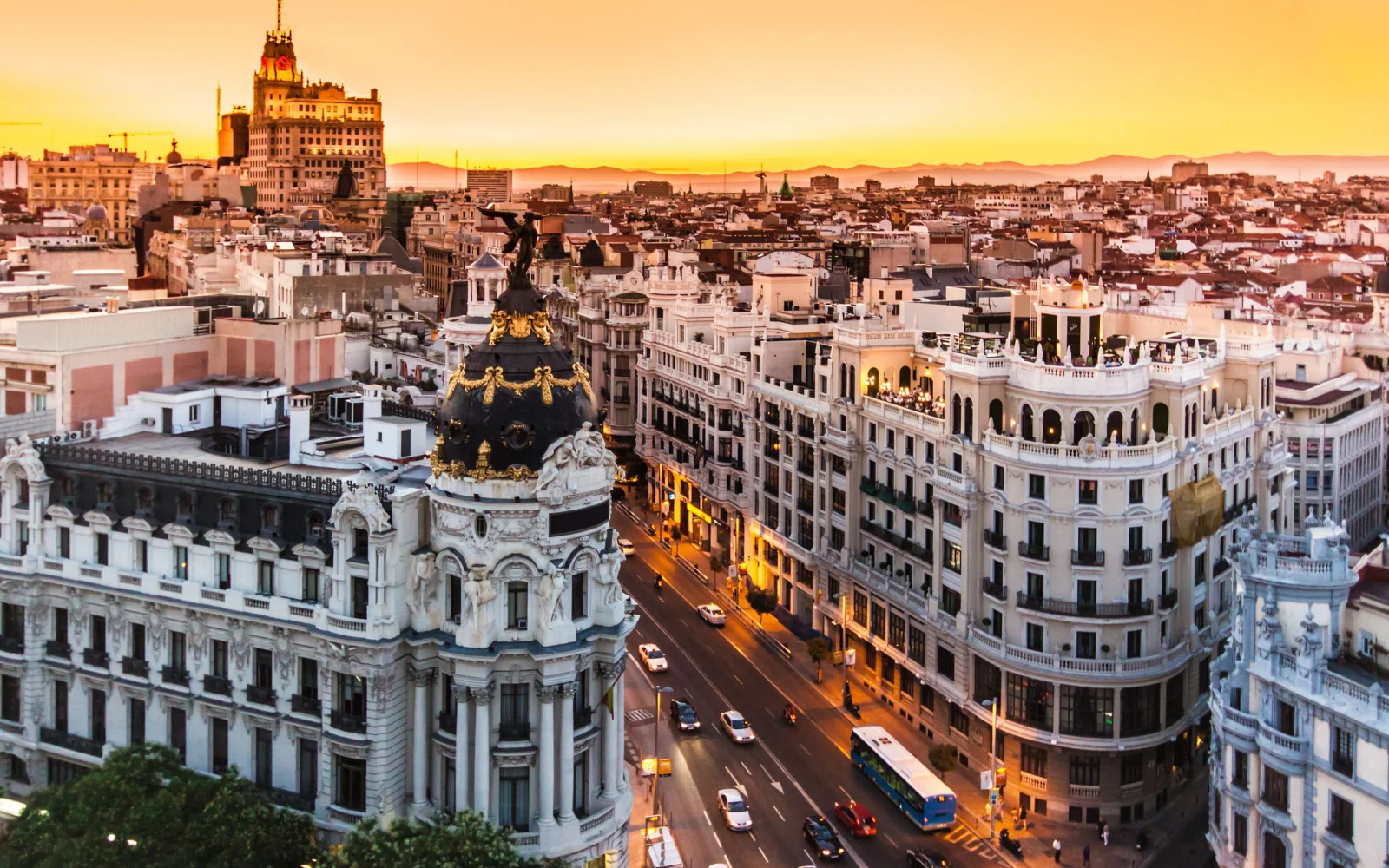Madrid, the capital of Spain, is one of the country’s prime tourist destinations. Every year, about 6 million people visit the capital.
The city has hundreds of years of history and cultural institutions to visit. You can spend all day at the world-famous Prado Museum with its collection of old masters or explore the imposing colonial facades of buildings such as the Royal Palace.
It’s also a stunning modern city with great shopping, gastronomy, and world-famous sports (even if you’re not a soccer fan, you should catch a Real Madrid or Atletico Madrid game if you can).
Madrid has so much to do, making it the perfect destination for a city break. However, like any big city, it has some challenges, and you should prepare for how to travel safely.
This travel guide has all the information you’ll need to travel to Madrid safely. Keep reading for all the information you need to know, including crime.
Is Madrid Safe to Visit in 2025?
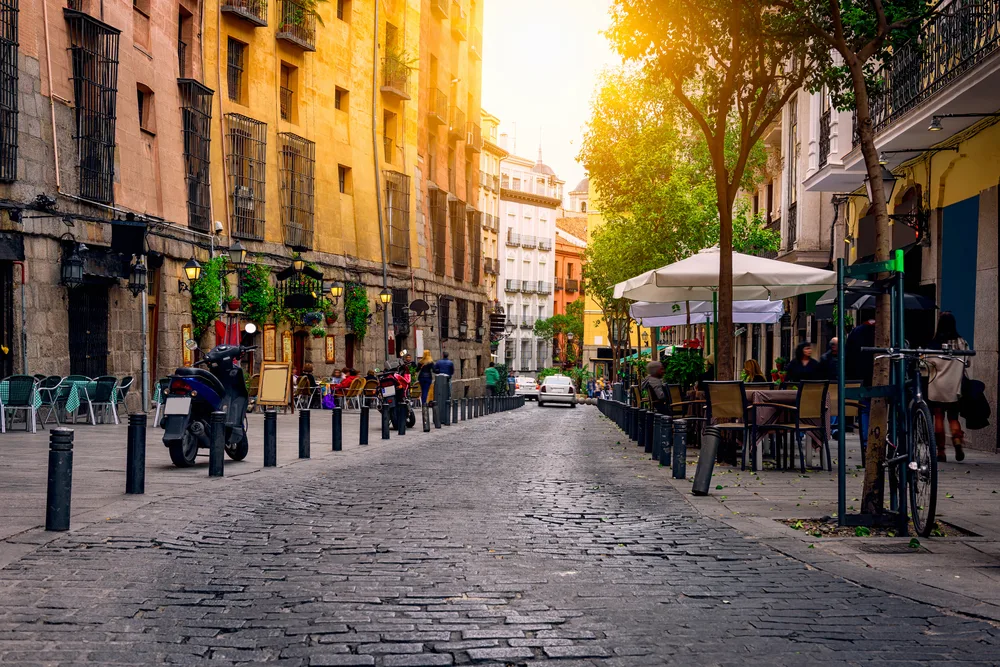
Catarina Belova/Shutterstock
Yes. Madrid is a safe city to visit and one of the safer European capitals! It has problems just like any other capital city, such as crime, and you should be aware of those problems.
However, most challenges are manageable enough that you should have a safe trip. A good place to start researching the safety of Madrid is to research the safety of the country that it’s located in, Spain.
Most travel advisories will include specific information for the capital and popular tourist destinations because governments know that is where their citizens will probably visit.
Most countries consider Spain a safe country to visit. Canada places it under the lowest possible travel advisory level, just telling its citizens to take normal safety precautions.
Some countries advise a bit more caution, such as the United States, but still advise that Spain is mostly safe to visit. Most of the problems that travel advisories list for Spain apply to Madrid, as it is the capital city.
Common challenges include:
- Demonstrations & civil unrest
- Terrorism threats
- Pickpocketing
- Bag snatching
- Mugging
Although these risks are present in Madrid, the levels of danger for these occurrences are fairly low. You should just be aware that these things can happen, not that they will definitely happen.
Keep in mind that for a city of its size, it actually has a fairly low crime rate. Since Madrid is the capital city of Spain, it frequently hosts protests and demonstrations about relevant political issues.
For example, in June 2023, the U.S. Embassy issued an alert about several announced demonstrations. Protests are frequent, but most are peaceful.
Bigger demonstrations, such as the November 2022 protests against healthcare cuts, can draw thousands of people and blockade the city. The risk of incidents is higher, but they still don’t happen often.
Even though most protests in Madrid are peaceful, it’s still a good idea to avoid them since you never know what might happen. Read the news or sign up for alerts from your embassy. If you notice a crowd gathering, head somewhere else.
Madrid is big enough that you can find a place to explore and not be affected by any protests.
Many countries include the risk of terrorism in their travel advisories for Spain. As Spain’s capital, Madrid is a likely target if something does happen. Madrid has been the victim of terrorist attacks before, most tragically the 2004 train station bombings.
Since then, Spanish authorities have greatly stepped up their anti-terrorism effort and there have been few incidents besides a letter bombing at the Ukrainian embassy in 2022.
You should be somewhat aware of this risk and take basic precautions, such as leaving an area if you hear a commotion. However, you shouldn’t let the fear of terrorism stop you from having a good time in the city.
Crime in Madrid
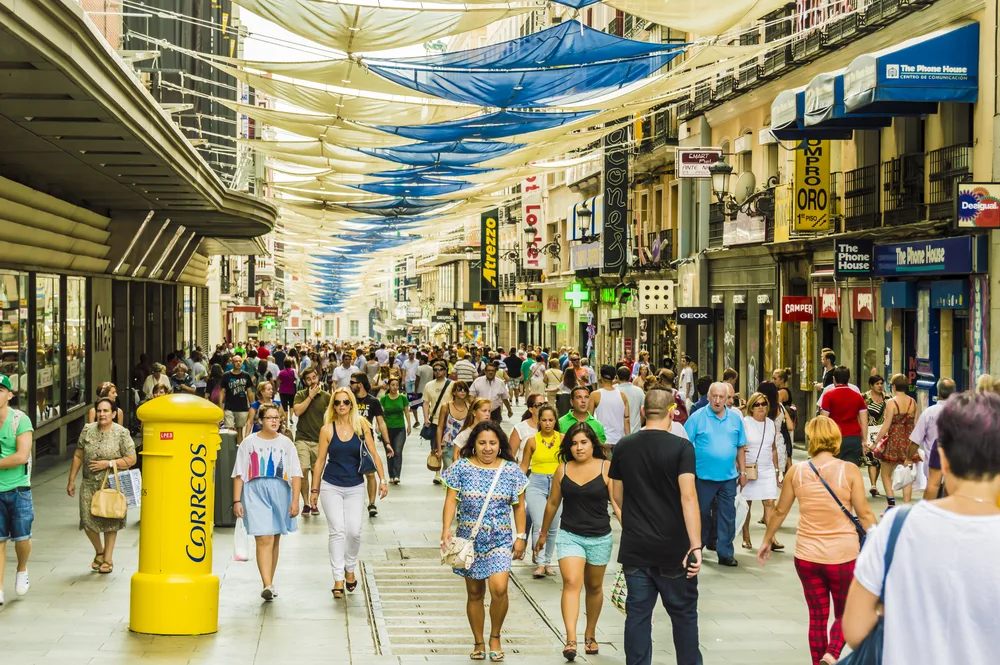
Madrid. Spain. September 13, 2014. People shopping at one of the busiest streets of Madrid/F. J. CARNEROS/Shutterstock
Crime is the most common concern for visitors to Madrid. Spanish cities have a bit of a reputation for crime targeting tourists, and visitors want to know if they will be affected.
Although crime is present in Madrid, it is not a dangerous city. Crime levels are low to moderate, and the most common crimes are forms of theft that don’t hurt anyone physically, just cause financial loss.
Violent crime rates are low, so you don’t have to worry about physical harm. Numbeo collects public opinion data to see how residents and expats feel about safety there.
According to the site, Madrid scores a 23.22 out of 100 on the crime index, which is actually a low value. That makes it one of the safest capitals in Europe, which is not what many people might expect!
Residents reported some concerns about certain types of crime. They were most concerned about corruption and bribery (which rarely affects visitors directly), followed by petty offenses such as drug abuse, vandalism, and theft.
The violent crime rate is also fairly low. The homicide rate is just 0.65 incidents per 100,000 people, and there are only a handful of murders each year.
That is a stunningly low number for a city whose metro area has a population of over 6.5 million. As you can see, the violent crime numbers are fairly promising; crime statistics in Madrid are trending positively.
According to government statistics, the crime rate in Madrid and in Spain as a whole decreased in 2021 by about 10%. Over the past few years, the general trend in Madrid is for crime rates to decrease (despite a few blips along the way).
This means that Madrid is getting safer and safer. Although crime does happen in Madrid, the same as it does in any major city around the world, it is not so prevalent that you can’t avoid it.
As long as you use your street smarts and take the same precautions you would take in pretty much any city, you can avoid being the victim of a crime, or at least greatly minimize your risk.
Petty Theft
The most common crime in Madrid is petty theft. Spain’s cities have a bit of a reputation for petty theft targeted at tourists, and Madrid is not immune to this problem.
The Australian government warns that petty theft is a problem in Spain’s large cities in its travel advisory for the country.
It warns tourists that thieves often target places where they know tourists will be, such as popular tourist attractions and transportation hubs. The Canadian government provides potential visitors with a specific list of theft hotspots in Madrid.
This includes important places for transportation such as Atocha train station, public transportation such as the subway system, and popular tourist attractions such as Retiro Park.
For a full list of theft hotspots in Madrid, check out the Canadian government’s travel advisory for Spain. The Spanish government created a pamphlet with basic tips for tourists on how to avoid being victims of a crime in Madrid and other cities.
Being vigilant on public transportation is particularly important because thieves can use the crowds as cover and steal your things, then get off at the next stop before you notice.
Make sure that you put your valuables somewhere where they are hard to reach when you are on the metro or bus. You never, ever want to leave your things unattended while in Madrid.
Putting your phone on the table while dining on an outdoor terrace or letting your bag hang off the back of a chair in a café is practically inviting theft.
You also don’t want to put your things down while you pose for a photo – you never know who could be walking by and use that opportunity to steal your things.
While walking around, make sure that you have physical contact with your valuables at all times, not just having them in sight. Physically hold on to the straps of your bag or use a cross-body bag that is harder to snatch.
Put your phone in your front pocket, where you will definitely feel someone trying to take it. You shouldn’t underestimate the city’s pickpockets, but you also don’t want to assign them too much power.
They are mostly criminals of opportunity. If you don’t give them the opportunity to steal from you, then there is nothing that you can do.
Assault
More violent incidents involving tourists are rare, but they can still happen. Attacks and assaults can occur. The UK government warns its citizens about the risk of attacks, including in Madrid.
Attacks are most common at night, so make sure that you stick to well-lit streets after dark. Assault is most common when people have been drinking.
If you are looking to check out Madrid’s nightlife, be careful not to overindulge as you don’t want to do something reckless such as get involved in a bar fight.
Women are sometimes targeted for drink spiking before an assault, so if you are a female traveler, make sure that you always keep your eyes on your drinks. If something bad does happen, Madrid has a designated Emergency Tourist Assistance Service that you can contact for help.
Avoiding Bad Areas
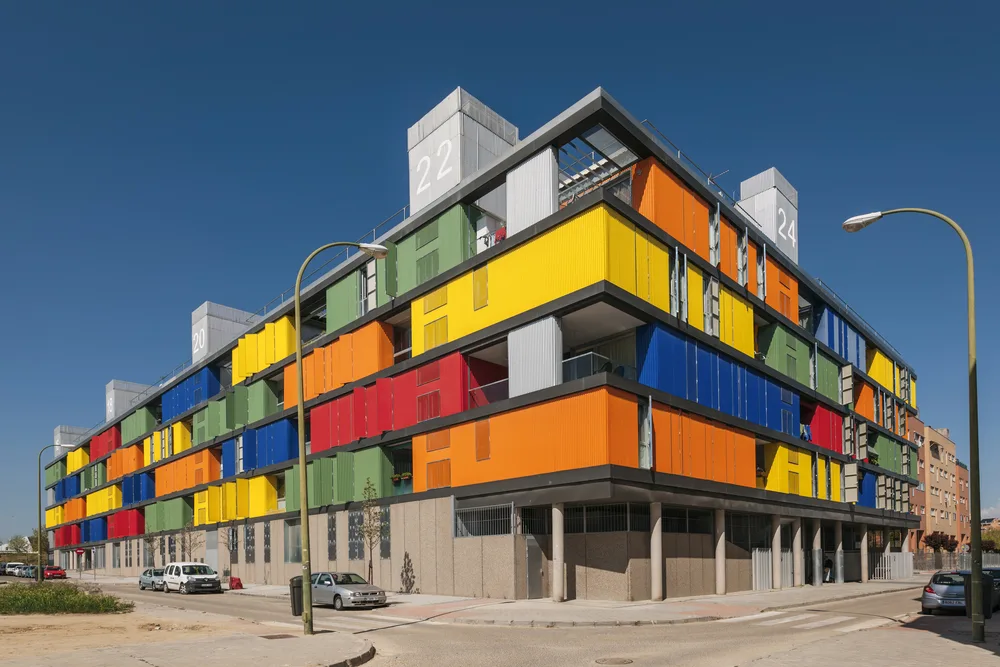
MADRID, SPAIN – APRIL 11: Housing Building, located on Avenida de la Peseta, designed by Amann-Canovas-Maruri, in Carabanchel, Madrid, Spain on April 11, 2015./Nessa Gnatoush/Shutterstock
Like any big city, Madrid has a few areas that have higher crime rates than others and where you may not feel comfortable going after dark.
Although the city doesn’t have many no-go areas, especially not close to the center where most tourists go, there are a few neighborhoods where you should proceed with caution.
Areas to avoid are:
- Caño Roto
- Pozo del Tío Raimundo
- Cañada Rea
- San Blas
- Carabanchel
There are also some areas in the center that become less safe at night. The areas around El Rastro and the main train station are sketchy after dark. In Centro, be careful at all times of day as the rate of pickpocketing is very high.
Things to Consider
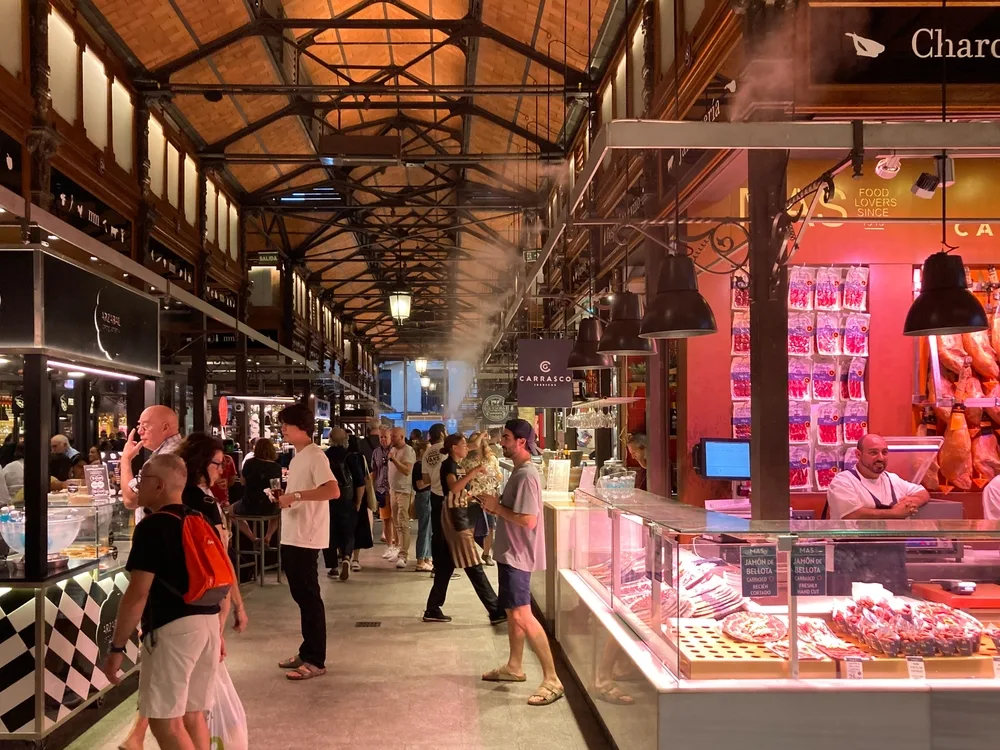
People at Mercado San Miguel Food Market, one of the most popular places in the city. Food stalls, drinks, seafood, traditional spanish Tapas. Madrid, Spain – 21 August 2022./Alekk Pires/Shutterstock
Here are a few additional safety tips to keep in mind for Madrid:
- Be prepared for the hot weather. Like all of Spain, Madrid gets hot in the summer. Hydrate throughout the day and wear sunscreen, even though you’re not at the beach. Follow the lead of the locals and avoid spending time outside during the hottest part of the day.
- Avoid renting a car. Madrid’s traffic is notorious in Spain and renting a car will just make your time in the city worse. Use public transportation to get around Madrid. If you want to explore the rest of Spain via a road trip, pick up a car when your time in the city is done.
- Use only licensed taxis or Ubers. Like almost anywhere else in the world, unlicensed taxis like to take advantage of visitors by charging extra for routine journeys. The public transportation network is good enough anyway that you only really need taxis to get around at night.
- Try to blend in with the locals. Madrid residents are known to be a stylish bunch, so dress up for dinner or for walking around. Follow local norms, such as dressing conservatively to visit churches.
Frequently Asked Questions
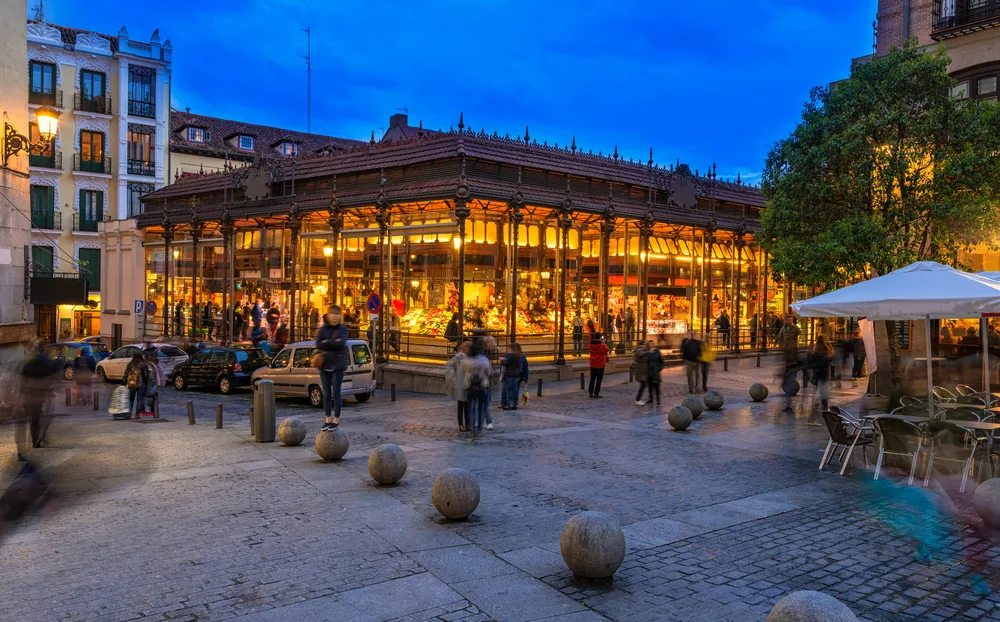
Catarina Belova/Shutterstock
Here are a few common questions people have asked before about visiting Madrid:
Is it safe to walk in Madrid at night?
It is safe to walk in Madrid at night if you take the right precautions. Stick to well-lit areas with other people around. Be careful if you’re walking through popular nightlife areas as drunk crowds can get rowdy.
What should I be careful of in Madrid?
The main thing to be careful of in Madrid is petty theft. Pickpocketing rates are high, and you don’t want to be careless with your valuables because someone could steal them.
Which is safer: Madrid or Barcelona?
Many city rankings place Barcelona above Madrid in terms of safety, but travelers who’ve been to both say Madrid is safer. Madrid has fewer problems that might affect travelers such as violent protests, and the pickpocketing rate is much higher in Barcelona.
Are taxis safe in Madrid?
Authorized taxis and Uber are safe to use in Madrid. As with anywhere in the world, be careful of pirate cabs, or unauthorized taxis.
Is Madrid expensive to visit?
Within Spain, Madrid has a reputation for being expensive, but it’s actually possible to visit it on a budget. Just do your research in terms of accommodation as there are budget and mid-range options available.
So, Is Madrid Safe to Visit?
Madrid is a safe big city to visit. The crime rate is low and the risk of other problems, although present, is also fairly low.
You should take some precautions to secure your valuables against pickpockets, but other than that, your biggest concern is enjoying your trip! Happy travels!



